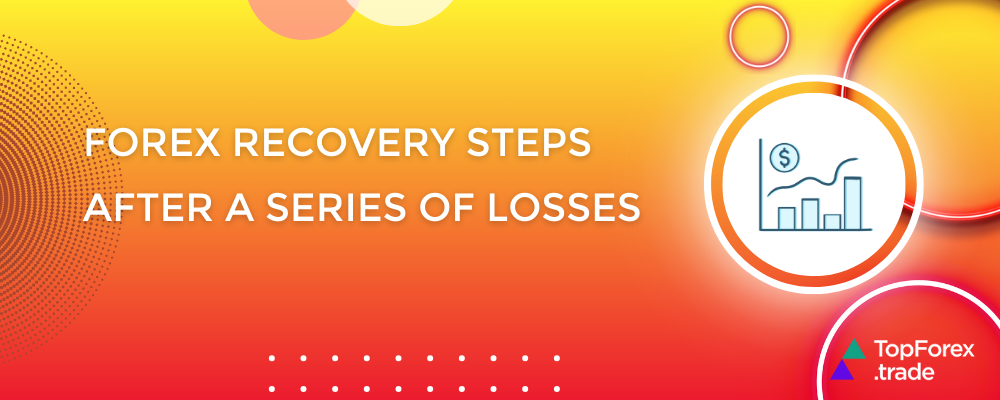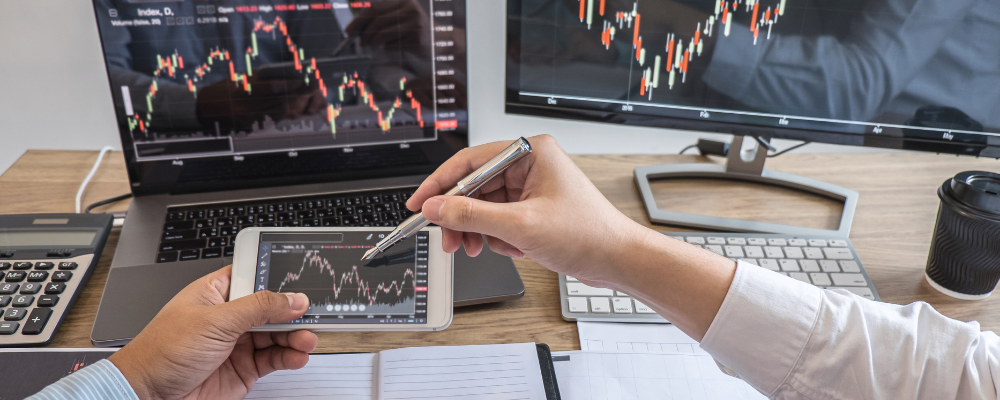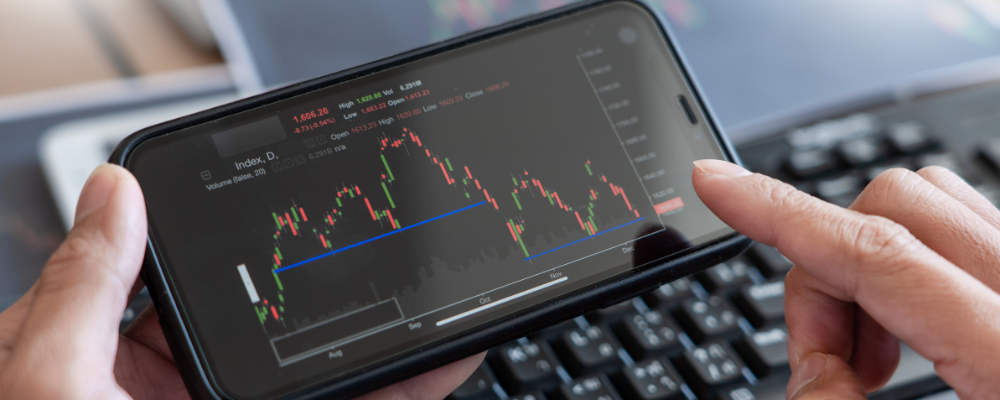Forex recovery plans: how to bounce back after a losing streak

Experiencing losses is an inevitable part of Forex trading, but how a trader responds to these setbacks can make all the difference. Rather than letting emotions take control or quitting, it’s essential to develop a recovery plan that not only recoups losses but also strengthens trading discipline for the future. In this guide, we’ll explore effective strategies and practical steps to get back on track after a string of losses.
What to do after a series of losses in FX trading?

Recovering from a series of losses in Forex trading requires a disciplined approach and a clear action plan. Losses can shake confidence, but with the right recovery strategies, traders can regain control and even use the experience to improve their skills. Here’s a comprehensive look at what to do after facing setbacks:
Pause FX trading and evaluate the situation
- Example: Imagine you’ve lost five trades in a row on the EUR/USD currency pair. Take a break and look back at the trade entries, exits, and decisions. Ask yourself: Was there a common factor in the losses? Were you trading during high-volatility news events? Did you enter trades impulsively without confirming your indicators?
- Practical advice: Set up a journal to document each trade’s rationale, strategy, and outcome. Reviewing this log can reveal patterns in your trading that might be leading to losses. For instance, if you’re constantly losing trades on Fridays, it might indicate the need to avoid trading on that day when volatility is often high.
Identify weaknesses in your FX trading strategy
- Example: Say you typically rely on the Moving Average Convergence Divergence (MACD) for entries, but during your losing streak, it’s been consistently giving false signals in a sideways market.
→Check out: How to use Moving Averages in CFD trading: strategies with XTB, Plus500, XM, AvaTrade, and Exness
- Practical advice: Adjust your trading strategy to match market conditions. For example, MACD may work better in trending markets. In sideways markets, consider adding the Relative Strength Index (RSI) or Bollinger Bands (BB) to identify range-bound trades. Test these adjustments on a demo account to confirm effectiveness.
Revisit and adjust your FX trading plan
- Example: Let’s say your trading plan specifies that you should risk 3% of your capital per trade. After the losing streak, this percentage may be too high for your current account balance.
- Practical advice: Lower your risk per trade to 1% or even 0.5% to protect your capital as you rebuild. Calculate position sizes carefully, and ensure each trade aligns with your new risk parameters. A tool like a position size calculator can help you apply these limits precisely.
Reinforce risk management with stop-loss orders
- Example: If you’ve experienced big losses by not having a consistent stop-loss strategy, it’s time to refine it.
- Practical advice: Implement a rule to set stop-loss orders for every trade, such as placing stops at the previous swing low/high or setting them a fixed number of pips away, depending on volatility. For instance, in high-volatility markets, place stop-losses further away to avoid premature exits. Tools like the Average True Range (ATR) indicator can help you adjust stop-loss levels based on market volatility.
→More about Forex risk management tools.
Manage emotions with a “cool-down” period in FX trading
- Example: After a losing trade, you feel frustrated and want to enter a new trade immediately to “get back” what you lost. This is often called “revenge trading” and is usually driven by emotion rather than analysis.
- Practical advice: Implement a mandatory waiting period after a losing trade. For instance, take a 15-minute break to reassess your mental state before placing a new trade. Use relaxation techniques, like deep breathing or visualization, to regain focus. This practice can prevent emotional decisions and improve your overall mindset.
Demo FX trading to rebuild confidence
- Example: Suppose your losses make you second-guess your trading abilities. This lack of confidence may lead to more mistakes.
- Practical advice: Return to demo trading to test your strategy without financial risk. Focus on using the same strategy you’d apply in live trading, so the experience is as realistic as possible. Track your performance, and only return to live trading when you’ve regained consistency.
→Pro tip: Choose reliable Forex brokers with demo accounts that are complete copy of a real ones.
Set realistic and incremental recovery FX goals
- Example: If your account has decreased by 10%, avoid the urge to recover it in a few trades. Instead, aim to regain 1-2% per week.
- Practical advice: Break down your recovery into small, achievable targets. This gradual approach allows you to make conservative, well-thought-out trades without taking excessive risks. Celebrate minor gains as you rebuild your confidence and account balance.
Leverage Social trading for learning and inspiration
- Example: Suppose you’ve encountered multiple losses using your own trading strategies, and you’re feeling unsure about the direction to take next. Social trading platforms can provide a wealth of insights by allowing you to observe the strategies of successful traders.
- Practical advice: Platforms like eToro, AvaTrade, and NAGA offer social trading features where you can follow or even automatically copy the trades of experienced traders. Use this as a learning tool rather than solely a shortcut to profitability. Start by observing traders who align with your goals and risk tolerance—note how they manage positions, set entry and exit points, and adapt to different market conditions.
Stay educated and adapt to FX market changes
- Example: Let’s say your trading strategy worked well in trending markets, but recent losses came in a range-bound market where different skills are needed.
- Practical advice: Continue learning by reading about different market conditions, indicators, and strategies. For example, if your losses stemmed from range-bound markets, research strategies specific to these conditions, like breakout or mean reversion tactics. Use TopForex.trade academy for more insights.
Implement a post-trade review process
- Example: After each trade, win or lose, go over your entry and exit points, risk-reward ratio, and adherence to your plan.
- Practical advice: Create a checklist for your review, which could include questions like: Did I follow my strategy precisely? Was the trade size appropriate? Did I feel calm or anxious while making this trade? By identifying mistakes and refining your process, you reduce the likelihood of repeating the same errors.
Case example: Alex recovery steps after a series of losses

Situation: Alex, an experienced Forex trader, recently encountered a significant losing streak while trading the GBP/USD currency pair. Over two weeks, Alex lost 10% of their trading account, with most of the losses occurring during high-volatility periods they hadn’t anticipated. Frustrated and shaken, Alex realized it was time to step back, evaluate the mistakes, and develop a recovery plan.
Step 1: Pause and reflect on recent trades
- Action: Alex takes a break from live trading to review the details of each loss. They notice that many of the losses occurred because they were over-leveraged and trading during major news releases without checking the economic calendar.
- Lesson: Alex realizes they need to be more cautious with position sizing and aware of upcoming economic events to avoid getting caught in volatile movements.
Step 2: Re-evaluate risk management rules
- Action: Alex decides to lower the risk per trade from 3% of their account to 1%. They commit to never risking more than this on any trade, regardless of how confident they feel.
- Practical adjustment: Using a position size calculator, Alex now ensures each trade size aligns with the new, reduced risk level, allowing for steadier account growth and less susceptibility to large losses.
Step 3: Back-test strategies on a demo account
- Action: Alex goes back to a demo account to back-test their strategy with the newly adjusted risk management. They test the same setups on GBP/USD and a few other pairs to confirm the consistency of their trading signals.
- Result: After two weeks of demo trading, Alex sees improved results, as the lower-risk trades and stricter entry criteria prevent significant losses.
Step 4: Apply Social trading for additional insight
- Action: To add a new dimension to their trading, Alex begins using a social trading platform like eToro. They select a few experienced traders with steady track records and a preference for GBP/USD trades, observing their methods without fully copying them yet.
- Outcome: By studying how these top traders set up trades and manage positions, Alex gains new insights, especially regarding timing and risk management. They adopt some of these strategies into their own plan, including paying closer attention to technical indicators like the RSI and the MACD.
Step 5: Set incremental recovery goals
- Action: Rather than aiming to make back the entire 10% loss in a short period, Alex sets a goal to recover 1-2% per week by trading cautiously and consistently. They track each trade in a journal, focusing on discipline rather than quick gains.
- Result: Over several months, Alex gradually rebuilds their account without taking unnecessary risks. Each small gain reinforces their confidence, allowing them to stay focused and motivated.
Step 6: Implement a post-trade analysis routine
- Action: After every trading session, Alex reviews each trade, evaluating their adherence to the plan, emotional state, and reasons behind each entry and exit.
- Outcome: This practice helps Alex remain objective, ensuring they don’t repeat the mistakes that led to the initial losing streak. Over time, Alex develops greater discipline and emotional control, improving consistency.
The best brokers for Forex trading
After a series of losses, choosing the right Forex broker is crucial to your recovery. A good broker offers reliable platforms, tight spreads, and tools that support risk management and strategy building. Below is a list of trusted Forex brokers that provide the features you need to regain control and trade with confidence.
XTB FX trading
XTB stands out for its strong presence in over 190 countries and its reputation for security and transparency. Regulated by top authorities like the FCA, CySEC, and KNF, XTB offers unmatched trust. With advanced platforms like xStation and MetaTrader 4, it’s easy to trade a wide range of currency pairs. Whether you’re new to trading or an experienced pro, XTB provides flexible account options, including Standard and swap-free accounts, to cater to various trading styles.
BlackBull FX trading
BlackBull Markets is a well-regarded forex and CFD broker, offering a comprehensive trading experience with advanced MT4 and MT5 platforms. These platforms come equipped with a wide range of analytical tools, helping traders develop and execute effective strategies. With a strong focus on user experience, BlackBull Markets provides excellent customer support and educational resources, making it ideal for both beginners and experienced traders. The broker also prioritizes security and transparency, offering a reliable environment for traders looking to improve their skills and explore innovative solutions in the ever-changing forex market.
Exness FX trading
Exness is an excellent choice for traders, offering a wide range of options including currency pairs, commodities, indices, and cryptocurrencies. Regulated by the FCA in the UK and CySEC in Cyprus, Exness ensures a secure trading environment. With competitive spreads on Standard and Professional accounts, it caters to various trading styles. The broker provides reliable support via email, live chat, or phone, and offers both MetaTrader 4 (MT4) and MetaTrader 5 (MT5) for a smooth, feature-rich trading experience. Overall, Exness is a robust platform worth considering for all types of traders.
AvaTrade FX trading
AvaTrade is a trusted online broker, regulated in multiple jurisdictions, offering a secure trading environment and a wide range of instruments, including forex, commodities, cryptocurrencies, and CFDs. Its user-friendly platforms, such as MetaTrader 4, MetaTrader 5, and the AvaTradeGO app, come with advanced charting tools and technical indicators for effective market analysis. With various account types, including demo accounts for beginners, and extensive educational resources like webinars and eBooks, AvaTrade caters to traders at every level. Multilingual customer support ensures a smooth trading experience, making AvaTrade a reliable choice for advancing your trading journey.
eToro FX trading
eToro is a popular online trading platform known for its user-friendly interface and innovative social trading features, making it a great choice for both beginners and experienced traders. Regulated by top-tier authorities like the FCA, CySEC, and ASIC, eToro ensures a secure and transparent environment for trading a wide range of assets, including stocks, cryptocurrencies, commodities, and indices.
Risk disclaimer: eToro is a multi-asset platform which offers both investing in stocks and cryptoassets, as well as trading CFDs.
CFDs are complex instruments and come with a high risk of losing money rapidly due to leverage. 51% of retail investor accounts lose money when trading CFDs with this provider. You should consider whether you understand how CFDs work, and whether you can afford to take the high risk of losing your money.
This communication is intended for information and educational purposes only and should not be considered investment advice or investment recommendation. Past performance is not an indication of future results.
Copy Trading does not amount to investment advice. The value of your investments may go up or down. Your capital is at risk.
Don’t invest unless you’re prepared to lose all the money you invest. This is a high-risk investment and you should not expect to be protected if something goes wrong. Take 2 mins to learn more.
eToro USA LLC does not offer CFDs and makes no representation and assumes no liability as to the accuracy or completeness of the content of this publication, which has been prepared by our partner utilizing publicly available non-entity specific information about eToro.
Related articles:
Forex recovery steps - FAQ